We treat
Migraines
Learn more about migraines
What is a migraine and how long does a migraine last?
Migraine is a severe headache that lasts anywhere from a few hours to up to 3 days. The headache is often localized to one side of the head, where it can have a pulsating feeling. Many people experience accompanying symptoms such as nausea/vomiting and/or sensitivity to sound and light. Typically, people with migraines avoid physically demanding everyday activities such as climbing stairs, as this worsens the symptoms.
Jump to section [Vis]
The International Classification of Headache Disorders
To characterize migraines, one must have at least 5 of the following criteria:
- Headache lasting between 4-72 hours, whether treated or untreated.
- The headache has at least two of the following four characteristics:
- Unilateral location (only one side of the head)
- Throbbing character
- Moderate or severe intensity
- Worsening with or attempts to avoid daily activity
- During the headache, at least one of the following symptoms is present:
- Nausea and/or vomiting
- Photophobia and phonophobia (sensitivity to light and sound)
Sources: Dhos.dk & Sundhed.dk

Migraines
Migraines are very common, the total number of people with migraine worldwide is estimated to be approximately 1 billion people.
The diagnosis also ranks seventh among the most disabling diseases in the world.
Symptoms of migraine
What does a migraine feel like?
There are different types of migraines, but there are some typical symptoms that recur frequently:
- Half-sided headache (can be on both sides)
- The headache is throbbing/pulsating
- The headache is worsened by physical activity
- Often there is nausea or vomiting
- May be accompanied by sensitivity to sound and light
Some people have migraines with aura. Aura symptoms can include visual disturbances with flickering vision, which occur before the migraine begins.
Different types of migraines
There are different types of migraine, as seen below:
The two most common types of migraine are:
- Migraine without aura
- Migraine with aura
In addition there are:
- Migraine with aura but without headache (silent migraine)
- Hemiplegic migraine
- Ocular migraine (Retinal migraine)
- Chronic migraine
- Vestibular migraine
- Hormonal migraine

Migraine after whiplash
A common symptom/aftereffect of whiplash is headache. Whiplash is characterized by the cervical spine and head first bending sharply backwards (hyperextension), followed by the head and cervical spine bending sharply forward (hyperflexion), as can typically happen in a rear-end collision in a car.
The mechanism of injury from whiplash causes damage to the soft tissues in the cervical spine, such as ligaments and associated joint capsules, as well as muscles, tendons and discs in and around the cervical spine.
More than 90% recover from whiplash and are healthy within the first 6 months.
Headache is a typical symptom in people after whiplash, while in some cases you can also see what is called “post-traumatic migraine”, which only develops after your accident, even though you have not previously had migraines
What are the causes of migraines?
Why do people get migraines?
Science has not been able to come up with a specific cause for migraines, but it is believed that there may be different things that play a role in why you get migraines.
During a migraine attack, the blood vessels in the brain change size and expand.
The blood vessels in the brain contain pain-conducting nerve fibers that respond to the dilation of the blood vessel and thus send signals of pain to the brain.
Based on current knowledge, it is believed that the brain and the meninges that surround the brain are hypersensitive to the pain signals sent from the nerve fibers in the dilated blood vessels during migraine. The increased pain sensitivity in the central nervous system occurs as a result of a chemical signal in the brain (neuropeptide) called calcitonin gene-related peptide (CGRP). Medically, antibodies have been developed against CGRP, which have an effect on migraine headaches, as it stops the above process.
Migraine is characterized as a neurovascular disease in which the trigeminovascular system is triggered, as the meninges, as well as larger blood vessels and the trigeminal nerve (5th cranial nerve) are part of the pain/disease picture.
Some people seem to be genetically more predisposed to certain triggers that cause migraines. For example, migraines can be triggered by hormonal fluctuations, such as the menstrual cycle, while for others it is triggered by lack of sleep, stress or alcohol.

What triggers migraines?
What triggers migraines?
Several different things are suspected of triggering a migraine attack. However, what triggers migraines varies from patient to patient.
Below are some of the typical triggers for migraines:
- Psychological stress and/or strain
- Hormonal changes, e.g. in connection with the menstrual cycle or pregnancy in women.
- Fatigue and lack of sleep
- Certain foods, often including chocolate or alcohol, as well as citrus fruits
Source: Jegharhovedpine.dk
Typical signs of different types of migraine
There are several different types of migraine. Below you can read more about the different types:
Ocular migraine (ophthalmological migraine)
Ocular migraine affects more women than men and consists of visual disturbances. These typically occur before or at the same time as a migraine attack. Vision is affected for a short period of time, without any permanent vision problems. However, during an attack, you may experience short-term blindness that starts within a few minutes and goes away within an hour.
Ocular migraine is diagnosed as a diagnosis of exclusion by an ophthalmologist. The cause is not completely known, but theories are based on increased tension in the blood vessels of the retina of the eye..
Migraine with aura
Many describe migraine with aura as a transient visual disturbance, but aura can also cover speech or sensory disturbances followed by headache. Typically, the visual, speech, or sensory disturbances develop over a shorter period of 20-25 minutes, to be replaced by headache without aura symptoms afterwards
Medical treatment for migraines may be considered.

Hormonal migraine
Hormonal migraines can be triggered by various things:
Birth control pills; some experience improvement in symptoms, while others experience increased frequency in their pill-free week when estrogen levels drop.
Pregnancy; some experience a worsening of their migraines in the first trimester, while the second and third trimesters are often with fewer or no migraines.
Menopause; some experience worsening of headaches just before menopause or at menopause, as the normal cycle is disrupted/changed. Symptoms often subside after menopause.
More than half of women who experience migraines can relate it to their cycle. In “menstrual migraines,” this is typically seen in the two days leading up to menstruation or the first three days of the menstrual period. At this time, the female sex hormone, estrogen, naturally drops, which can cause migraines.
Vestibular migraine
The vestibular sense (labyrinth sense) is found in the inner ear and ensures that we can maintain balance. If you have a vestibular migraine, in addition to the known migraine symptoms, there will be dizziness, which can last from a few minutes to a few hours. In addition to dizziness, vestibular migraine can be accompanied by tinnitus and hearing loss with pressure in the ear in connection with the attacks.
As with ocular migraine, vestibular migraine is a diagnosis of exclusion, where it is especially important to rule out ear stones (BPPV Benign Paroxysmal Positional Vertigo) and transient blood clot or cerebral hemorrhage.
Hemiplegic Migraine
Hemiplegic migraine is migraine with aura (i.e. visual, sensory, speech and/or motor disturbances), headache and with simultaneous paralysis on one side of the body that disappears after the attack. It is a rare form of migraine that may be hereditary. Hemiplegic migraine is most commonly seen in women, and in Denmark it is estimated that 1:20,000 have hemiplegic migraine.
Are migraines dangerous?
Migraines are not dangerous and do not cause brain damage, but they do greatly affect your quality of life. However, you should be aware of any changes in your migraine symptoms. Migraine symptoms should not be confused with other serious illnesses.
Some of the symptoms of migraines can be confused with other serious conditions such as tumors, blood clots, or brain hemorrhage.
Therefore, seek medical attention if you experience any of the following:
Has your migraine changed in nature?
- Does your migraine come on suddenly – has the pattern changed?
- Personality changes
- Increased pressure in the skull (vision changes and morning headaches, worsened by heavy lifting)
- Acute, severe headache of great intensity
- Worsening of the headache over the past few weeks
- Headache onset in patients with cancer
Migraine and sleep
Both lack of sleep and too much sleep can be a trigger for headaches. There are also studies that point to a connection between sleep disorders and migraines, and if you suffer from a sleep disorder, you would expect that improving your sleep can reduce the severity and frequency of migraines.
The exact cause is unclear, but migraines can both be triggered by sleep disturbances and be the cause of sleep disturbances. Studies indicate that parts of the nervous system and neurotransmitters from them are involved in migraines, and that these same parts are essential for regulating normal sleep.

How do I distinguish between a migraine or a headache?
The chart below is based on the two most common types of headaches in Denmark; migraine and tension headache. The typical characteristics of migraine and tension headache are given.
Migraine symptoms:
- On one side of the head
- Duration from 4-72 hours
- Throbbing/pulsating headache
- Moderate to severe intensity of pain
- Worsens with physical activity
- Nausea or vomiting
- Light and/or photosensitivity
- Aura may occur with visual and sensory disturbances
Tension headache symptoms:
- Both sides of the head
- 30 minutes and up to 7 days
- Pressing headache
- Mild to moderate intensity of pain
- No worsening with physical activity
- No nausea or vomiting
- Possible photophobia or noise hypersensitivity
- No aura
Source: Jegharhovedpine.dk.
Migraine testing and diagnosis – Do I have migraines?
According to The International Classification of Headache Disorders and the Danish sundhed.dk, migraine is diagnosed based on the following:
You must have at least 5 attacks that meet the following criteria:
- Headache attacks lasting between 4-72 hours, whether treated or untreated.
- The headache has at least two of the following four characteristics:
- Unilateral localization (only one side of the head)
- Pulsating nature
- Moderate or strong intensity
- Worsening when trying to avoid routine activity
During the headache, at least one of the following two symptoms is present:
- Nausea and/or vomiting
- Photophobia and phonophobia (light and sound sensitivity)
A headache diary is an important part of the migraine diagnostic process, so that the healthcare professional, together with the patient, can assess whether it is a tension headache or migraine, and whether there is reason to suspect a medication-induced headache.
Likewise, during the diagnostic process, doctors will assess that there are no other significant illnesses causing the migraine.
Source: Dhos.dk, Sundhed.dk, Neuro.dk

Migraine and stress
Stress is a psychological and emotional burden when a person experiences that they cannot live up to the expectations and demands of their surroundings, and this often ends up with physical consequences.
During stress, the body is on alert (increased sympathetic activity, fight/flight) and with prolonged exposure, the stress hormone cortisol is released.
Short-term stress with the release of adrenaline/noradrenaline sharpens the body and increases performance, while long-term stress wears down the body and performance levels decrease, as high levels of cortisol over a longer period of time reduce the immune system, making optimal rest, recovery and rebuilding of the body impossible.
Regarding stress and migraine/headache, there are several mechanisms:
- Stress generally increases muscle tension because the body’s fight-or-flight response is activated, which can cause tension headaches, which can also trigger migraines.
- Stress triggers physiological processes that worsen headache problems in terms of duration, frequency and intensity of the headache.
- Stress can be a single factor that triggers migraines.
- Stress in most cases negatively affects nighttime sleep, which can lead to migraines.
It is important to verbalize stress, as both stress can trigger migraines and headaches. However headaches and migraines can also be the stress factor reducing the ability to participate in normal daily life.
Migraine after concussion
Headaches are a common complication of concussion. Post-traumatic headaches often occur within the first few days after the concussion, and can manifest as tension headaches or, less commonly, migraines.
Treatment of migraine
Medical treatment for migraine can be divided into two types; Attack medication and preventive medication. Note: When considering medical treatment, you should always consult your own doctor.
Attack medication:
- Weak analgesics such as over-the-counter headache pills, such as panadil or pamol, are often tried. Anti-inflammatory medications (NSAIDs) such as ibuprofen can also be tried.
- Triptranexamic acid is then tested, the purpose of which is to “interrupt” the headache during migraine attacks.
Preventive medication:
Some patients with migraine have more than 4 days of migraine per month, and at the same time have poor effect of attack medication, which is why their quality of life is significantly impaired as a result of migraine. In collaboration with their doctor, this group of migraine patients can be offered preventive medication against migraine.
Some of these products include:
- β-Blockers
- Angiotensin II antagonists
- CGRP – antibodies
- Botox
NOTE: The choice and advice on medication must be made in collaboration with your doctor, as he or she is responsible for offering the right medication and ensuring that it does not interact with other medications or cause undesirable side effects.

Migraine and nausea
Many people with migraines experience nausea and may also vomit during migraine attacks.
What can you do about migraines?
- Headache diary – can help find a pattern in the headache and any triggers
- Sleep – Ensure a regular circadian rhythm
- Stress – minimize stress
- Triggers – minimize triggers
- Tensions – think about ergonomics in everyday life, in terms of avoiding inappropriate working positions that cause tension in the musculoskeletal system.
Migraine and outlook
As people get older, many experience a decrease in the number of migraine episodes. At the same time, people typically become better at managing migraine attacks, so that the intensity of the attack decreases. However, migraine aura, but without headache, is typically more common as people get older.
Osteopathic approach to migraine
An osteopath looks at the entire body, and takes into account, among other things, the immune system, musculoskeletal system, nervous system, organ system, hormonal system, circulation and respiration when assessing the body.
Osteopathic treatment and thinking are based on the fact that the body’s structure and function are interconnected, and if there are imbalances in some of the body’s systems, this can lead to symptoms of illness.
Osteopathic treatment for migraines, as well as other physical problems, therefore seeks to normalize imbalances in the body’s systems, in order to give the body the best conditions to heal itself.
Osteopathic examination and treatment of migraine will look at several things that may be factors that can influence the frequency/intensity of migraines and headaches:
- Biomechanical; Are there any blockages in the neck/back that can cause muscle tension that can lead to tension headaches, which can be a contributing factor in how frequently migraines occur?
- Has there been a trauma around the coccyx that causes increased traction throughout the meninges?
- Is there muscle tension in the neck and back muscles or in the jaw muscles?
- Is there an imbalance in the nervous system? Is the patient stressed?
- Is there a hormonal impact on the cycle in women?
- The cranio-sacral system; Is there tension around the skull? 5. Cranial nerve, n. trigeminus which is involved in migraine. Including restrictions and tension from the jaw muscles.
- Is the blood supply and nerve supply unaffected by the surrounding tissue, so that the nerve and blood supply is optimal for the head/skull.

Often related problems
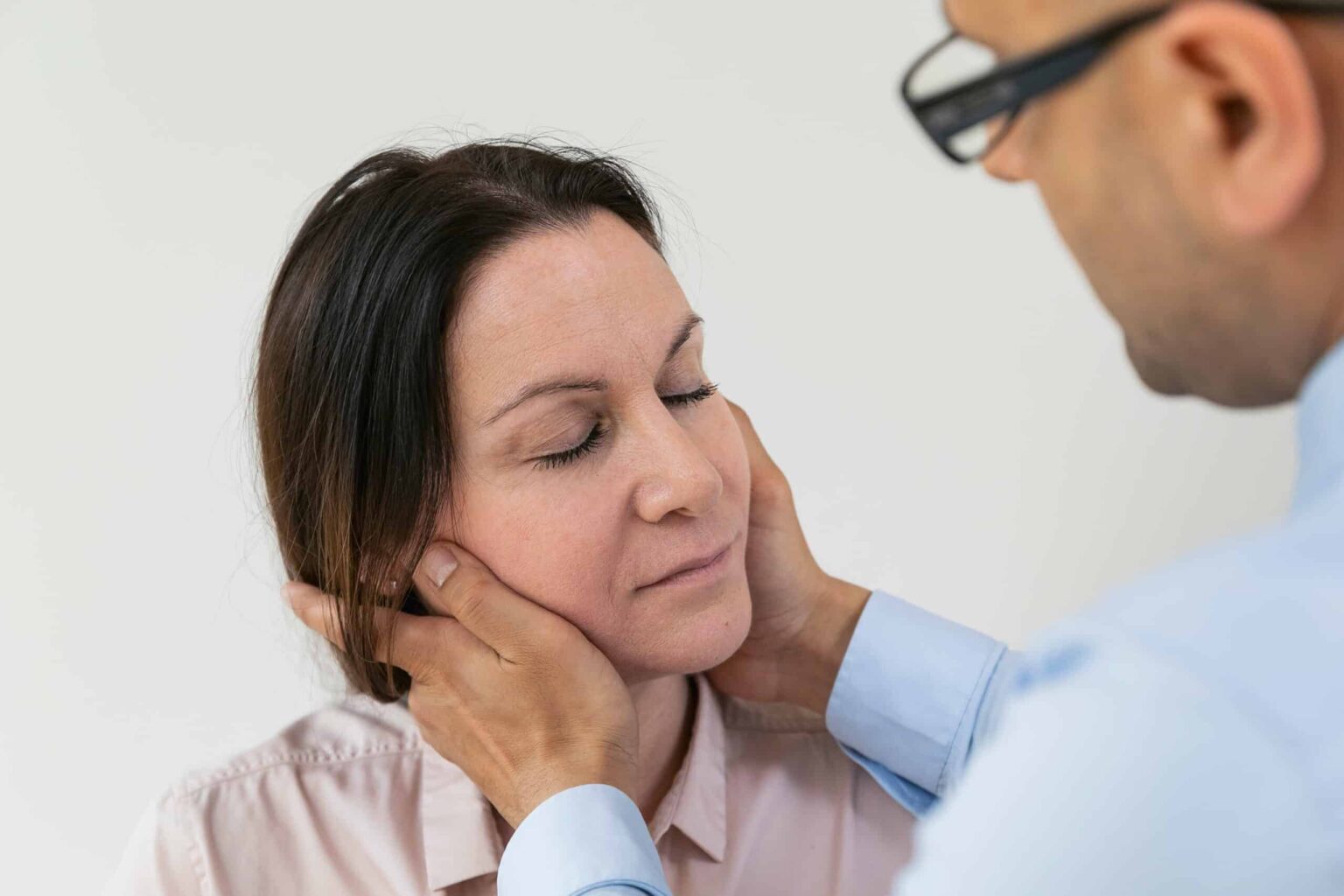
Jaw joint pain
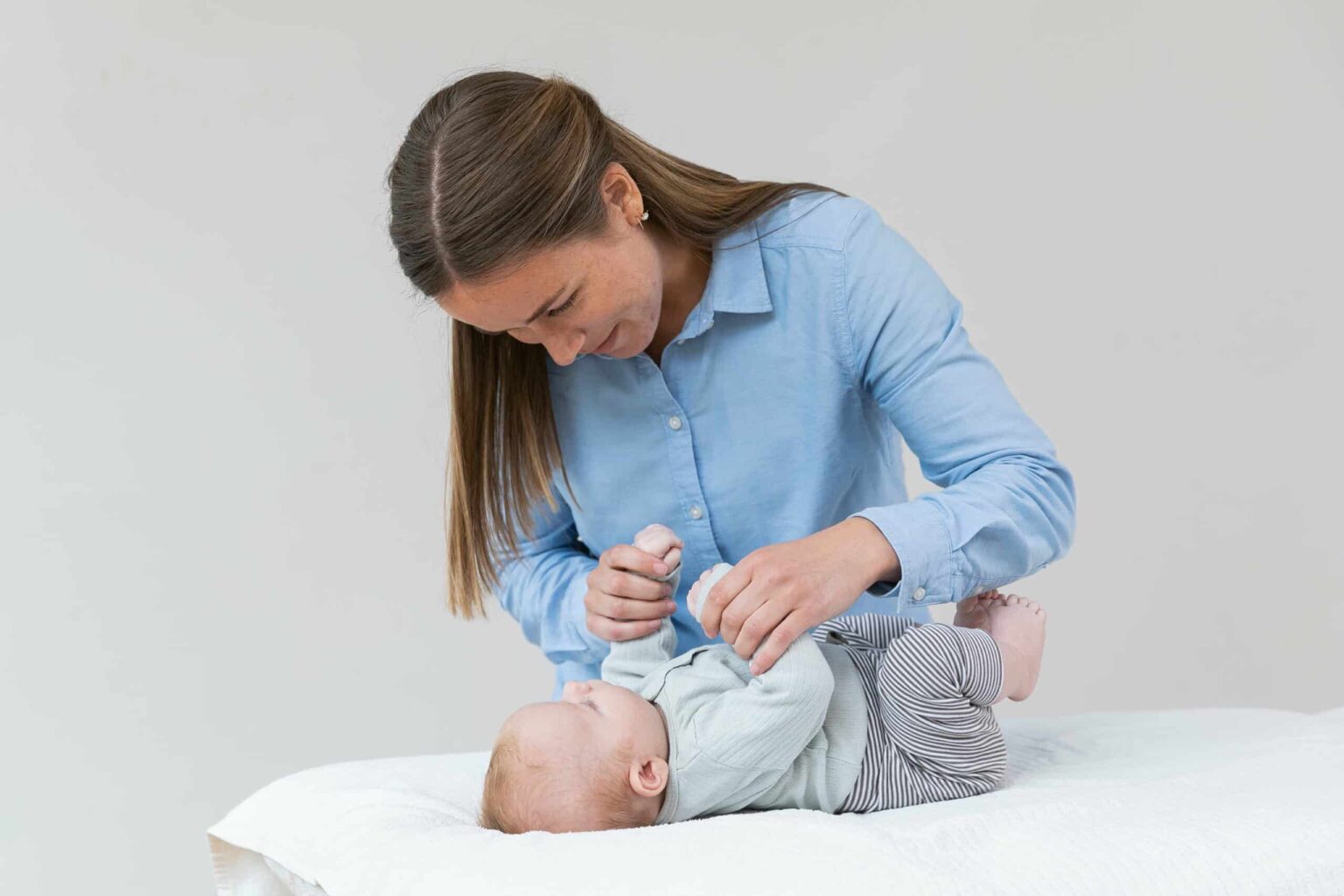
Hypermobility in babies and children

Muscle tension or imbalances in babies and children
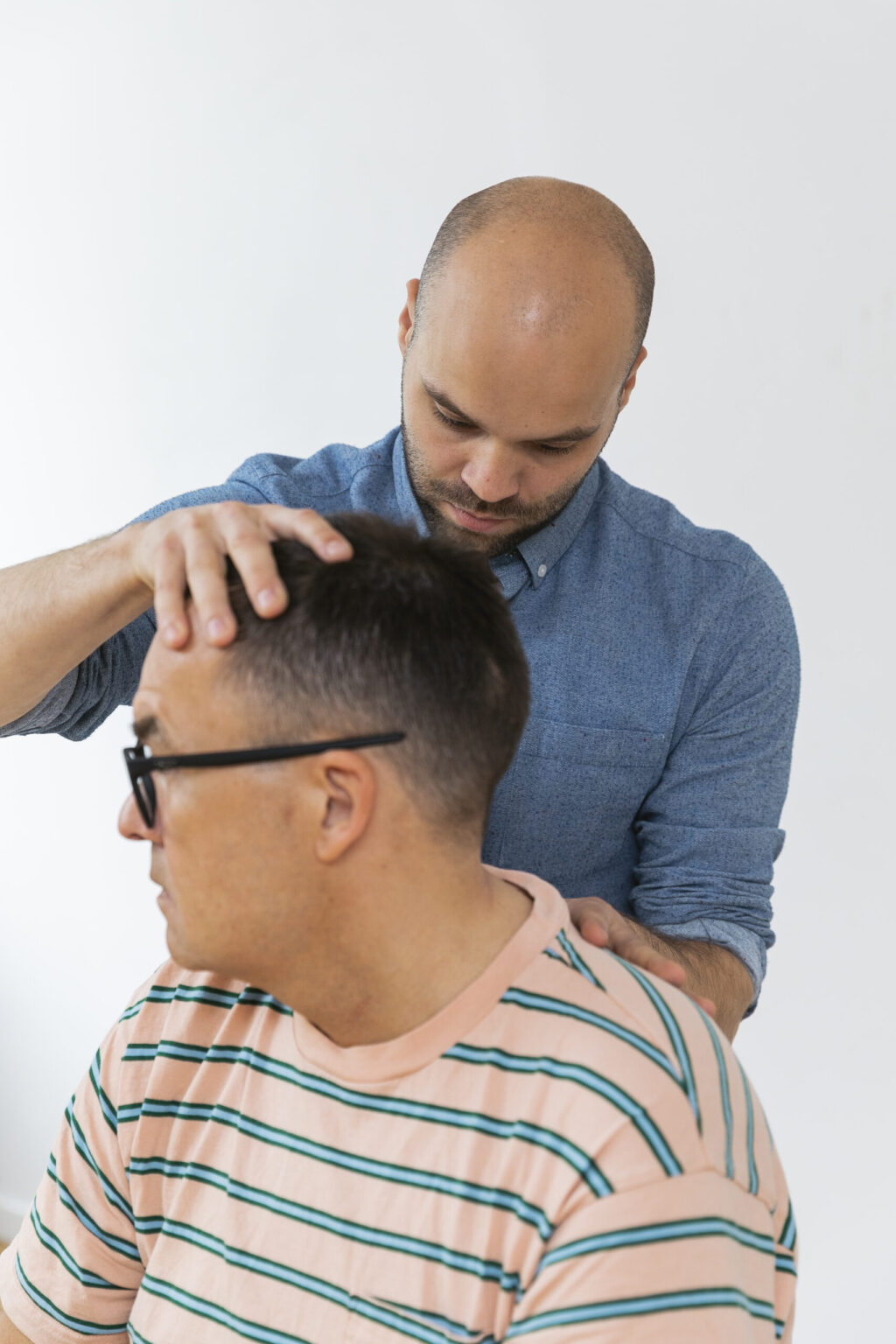
Brain hemorrhage
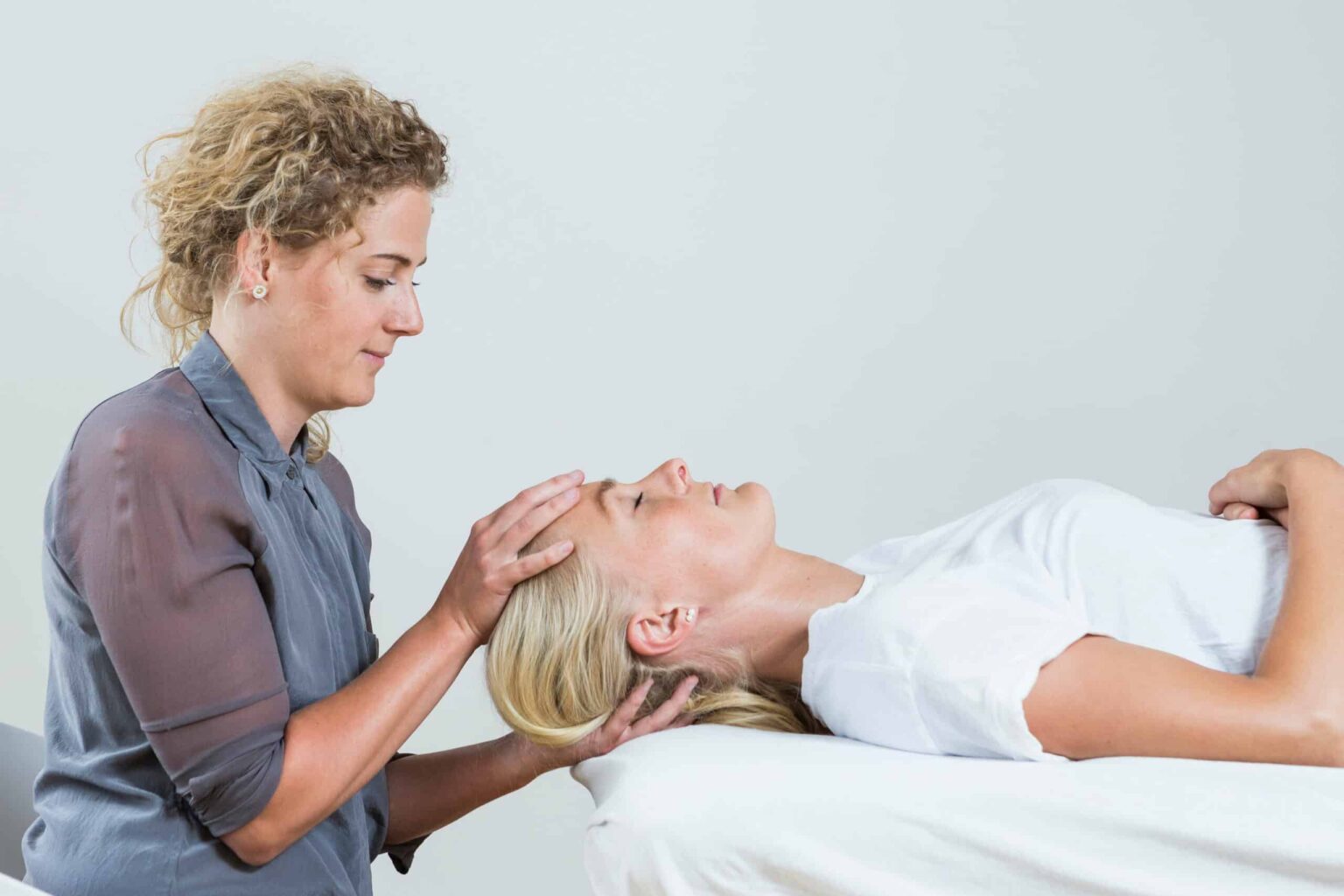
Post-traumatic headache
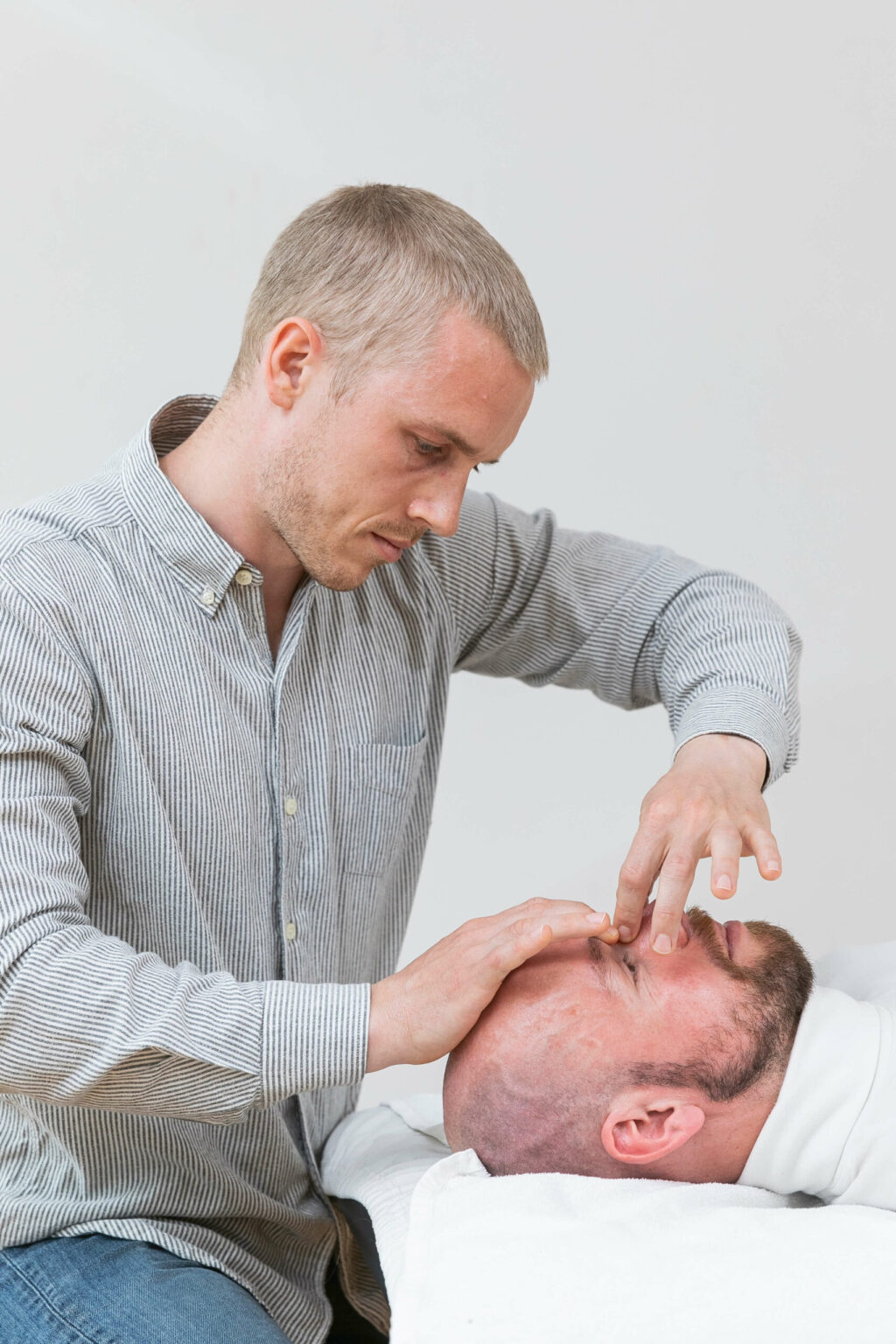
Sinusitis
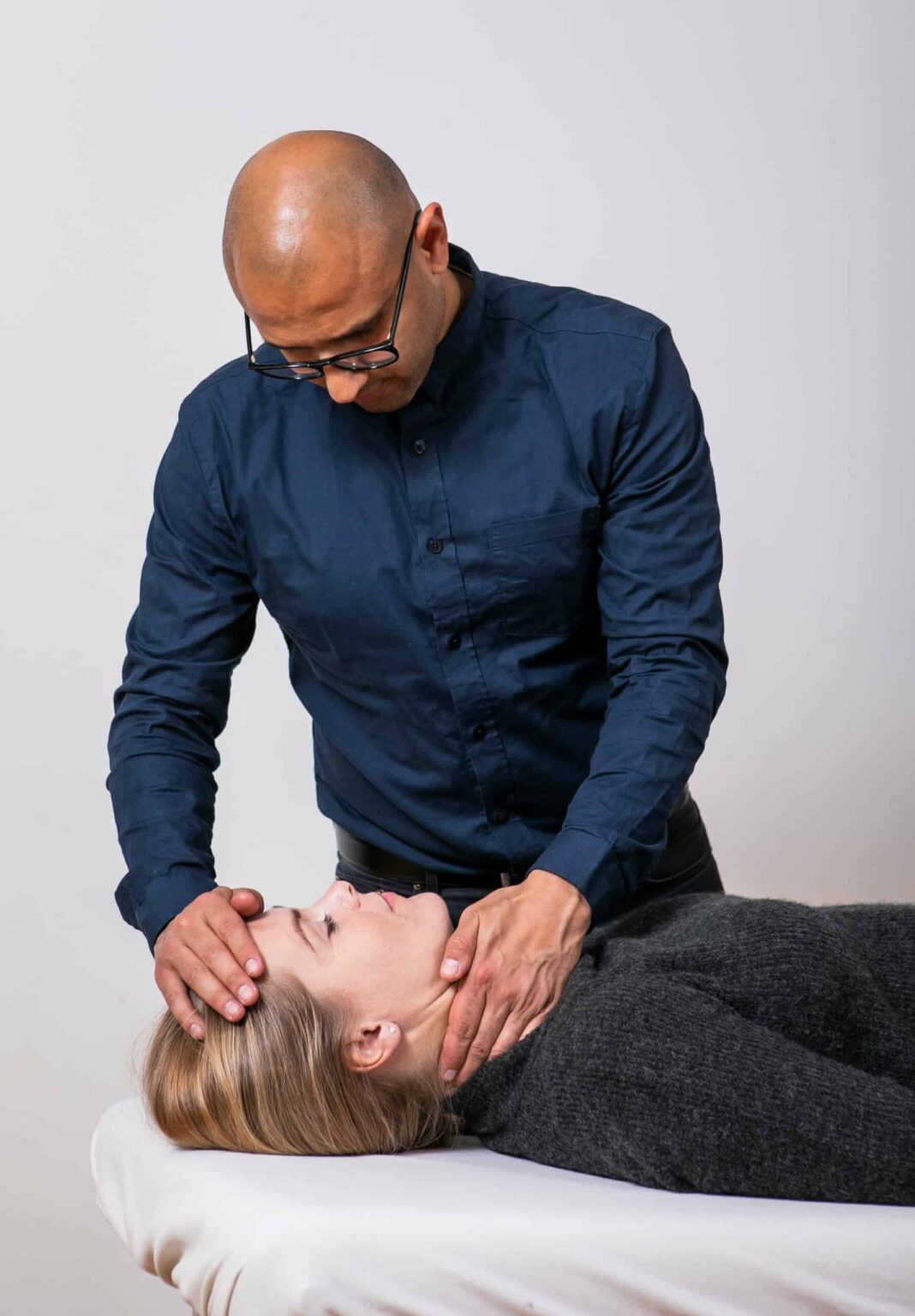
Neck strain

